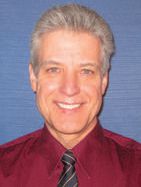Crafting your resume and cover letter
Ken Pelczarski | TLT Career Coach May 2012
Proper paperwork will smooth your ride to a new opportunity.
THE PURPOSE OF THE COVER LETTER AND RESUME is to stimulate an employer to proceed to the next step of the hiring process, usually a telephone or personal interview.
You need to convey enough relevant and successful background, as well as good reason for your interest, for an employer to recognize your potential value to the company. However, presenting lengthy documents will make it difficult for an employer to evaluate your experience and goals and might provide additional information that could disqualify you.
COVER LETTER
Maintain a template cover letter you can customize for each job application once you have researched the specific company and position. Below are possible items for your cover letter (half-page length is ideal):
• Why you are applying and how you heard of the position.
• Whom you were referred by (if applicable).
• Brief introduction (personal brand statement).
• Pertinent experience.
• Relevant accomplishments.
• Benefits and contribution level you offer.
• Reason for looking.
• Goals in obtaining a new position.
• Interest in the specific company and position.
• Stress company research you have done, and why you are a good long-term fit.
• Explain time gaps and questionable job moves.
• If relocation is involved, describe your affinity to the area, desire to settle there and potentially modest costs to move.
• General salary history, not salary desired (only if requested by the company).
• Close by requesting a personal interview.
THE RESUME
Your resume will initially get a 10-second look, so first impressions are critical in obtaining a more in-depth evaluation. You often will be competing with dozens of candidates, so your resume needs to stand out. Although resume writing is an art, you still need to employ acceptable resume-writing techniques to increase odds of a positive response.
Below are general rules for resume writing:
• 1-3 pages.
• Update regularly.
• Easy to read/lot of white spacing.
• White/neutral paper color.
• No photos.
• Check spelling and punctuation carefully.
• Proofread and have others critique.
• Consistency in formatting.
• No long paragraphs.
• Keep it chronological (avoid functional format).
• Honest information (or you could lose a job offer and tarnish your reputation).
• Emphasize accomplishments (use bullets).
• Display success throughout your career.
• Detailed focus on jobs held over the past 10-15 years.
• Summarize jobs earlier in your career with lesser detail.
• Use action words: negotiated, built, turned around, saved, spearheaded, resolved. Avoid weak words: helped, assisted.
• Use keywords for applicant tracking systems.
• Don’t offer reasons for leaving jobs (unless offering a good reason is simple).
• No salary information.
• List references separately.
Below are common resume headings:
Contact Information
• Personal address and phone numbers (not employer’s).
Skill Summary/Job Objective
• Focused skill set and objective.
• Short paragraph form and/or list of skills and strengths organized in columns.
Work History
• List each company and role chronologically.
• Precise dates (month and year preferred).
• Company descriptions.
• Official job titles and main duties.
• Accomplishments and awards (quantify if possible).
• List non-full-time jobs and activities as you would full-time jobs to fill in time gaps: consulting, temporary jobs, volunteering, course studies, helping a friend’s business, family illness, sabbatical, travel, book-writing, or simply “pursuing full-time employment.”
• Omit jobs (unless recent) of a few months or shorter.
• Internships (recent grads).
Education
• List formal training: college degrees earned and expected, certifications, seminars, Webinars, STLE education courses.
• Note honors and high GPA.
Military Experience
• Rank, duties, awards and certificates.
Memberships, Extracurricular & Volunteer Work
• Trade associations/professional societies.
• Relevant volunteer and community work.
• Honors and awards.
Presentations/Publications/Patents:
• List on separate page, if lengthy.
Although face-to-face interviewing is ultimately what gets you hired, the resume is often crucial in getting you to that point. Most professional hiring involves careful screening of a resume before the personal interview.
Tune up your resume for a smoother ride to a new opportunity.

Ken Pelczarski is owner and founder of Pelichem Associates, a Chicago-based search firm established in 1985 and specializing in the lubricants industry. You can reach Ken at (630) 960-1940 or at pelichem@aol.com.